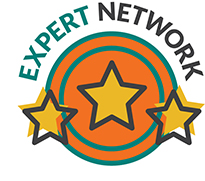Discovering & Motivating Talent In The Life Sciences: Redefining "Other Duties & Responsibilities"
By Laurie Halloran and Patrick Ward, Halloran Consulting Group, Inc.
The year 2020 has brought to the forefront the issues that will define a competitive advantage for top employers: from the COVID-19 pandemic, which has prompted questions about how companies are putting employee needs and safety first, to the aftermath of the murder of George Floyd and the conversations this has sparked anew about how companies are taking meaningful, intersectional approaches to diversity, equity, and inclusion (DE&I) within their own organizations. Prior to the economic crisis in which the United States currently finds itself, the market for talent across all industries was tight and many companies struggled to find technically strong candidates who also aligned with their own organization’s core values. Many of these industries have been adversely impacted since the economic crisis hit and have struggled with ways to adapt that meaningfully impact their bottom line. In the life sciences industry, we have been fortunate to be able to use our skillsets and talents to adapt, innovate, and grow,1 which leaves us with similar challenges as we had at the beginning of the pandemic: How do we attract the right kind of talent to a role within our organizations? How do we take the same innovative approaches in our talent acquisition processes that we put into our products?
COVID-19 pandemic, which has prompted questions about how companies are putting employee needs and safety first, to the aftermath of the murder of George Floyd and the conversations this has sparked anew about how companies are taking meaningful, intersectional approaches to diversity, equity, and inclusion (DE&I) within their own organizations. Prior to the economic crisis in which the United States currently finds itself, the market for talent across all industries was tight and many companies struggled to find technically strong candidates who also aligned with their own organization’s core values. Many of these industries have been adversely impacted since the economic crisis hit and have struggled with ways to adapt that meaningfully impact their bottom line. In the life sciences industry, we have been fortunate to be able to use our skillsets and talents to adapt, innovate, and grow,1 which leaves us with similar challenges as we had at the beginning of the pandemic: How do we attract the right kind of talent to a role within our organizations? How do we take the same innovative approaches in our talent acquisition processes that we put into our products?
One answer can be found in an often-overlooked bullet point in a common job description: “other duties and responsibilities as required.” This is so common in job descriptions and role postings that many candidates gloss over it, focusing on the more specific points of the job description for their questions. Recently, however, a Halloran candidate asked us to define what this phrase meant, to help them understand what this could include. Our response went as follows: “The reason we usually include this in the job description is more often than not for the benefit of the candidate; what are your interests that may not be captured in the job description and how can we support this? … We do not have anything specific from our end envisioned, but we welcome the opportunity to hear from you what more you would like to do and how we can build that, either into your immediate work or in your goals and development planning.” The approach outlined in our response allows us to bring in people with diverse skillsets and figure out how to best use them for not only the most immediate needs that the role seeks to fill but also to provide opportunities for them to use all the skillsets in their proverbial toolboxes, both as they grow and as we seek to pivot and transform in line with the innovations of the life sciences industry. This balances the needs of the business with the wants of the prospective employee, bringing fulfillment from a professional standpoint on the employee’s end and fulfilling the myriad needs of the drug development process.
Should You Hire A Generalist Or A Specialist?
The debate on the generalist vs. subject matter expert model is not a new one and it would be ignorant to overlook it. An article from the Harvard Business Review weighed the pros and cons of each side, pointing out that a generalist is regarded as a “jack of all trades, master of none.”2 Our industry is positioned in a way that refutes this idea; the interconnectivity of the drug development process allows professionals to often progress their careers across multiple areas, especially clinical operations & development, quality assurance, and regulatory affairs. These individuals, rather than being masters of none of these areas, leverage their business acumen acquired during their time in each of these disciplines to their current assignment. They can use this to look at their own work and anticipate the wants, needs, questions, and concerns from their cross-functional peers before they present their ideas or work to them.
Making the most of this business acumen in the way a role is framed is not an entirely novel concept in the life sciences industry. For example, regulatory affairs chemistry, manufacturing, and controls (CMC) professionals often begin their career in the CMC space, working in the related departments and getting exposure to regulatory affairs activities before formally making the jump into that area. They are able to navigate the regulatory process in this key stage by leaning on their knowledge of the language and processes of CMC to efficiently and effectively take on the work that comes before them and get their assets to and through key inflection points. This also allows them to stay close to the latest innovations in CMC and understand them with relative ease as compared to someone without the same depth of experience, allowing for their work to reflect that innovation. Bringing that same approach to the development of talent and allowing employees to continue to work in areas of their own expertise will only benefit the organization in terms of efficiency, knowledge sharing, and innovation.
Changes to the life sciences industry in terms of its own composition also provide a great opportunity to utilize these diverse skillsets and allow employees to broach multiple areas of work. The rise of startup and venture capitalist-funded organizations has been going on for years, but the COVID-19 response shows just how impactful these players are. For example, in Endpoints News’ ranking of the top COVID-19 vaccines, the No. 1 and No. 2 spots are held by Pfizer and Moderna, respectively; a 170-year-old company is being challenged by a 10-year-old company for the top spot. Even more impressive is that to get to that No. 2 spot, Moderna had to beat out other similar titans of the life sciences industry.3 It should not surprise many to know that the best ecosystems for life sciences innovation are also those that are hubs of technological innovation, Silicon Valley and Boston chief among these.4 Companies in the technology space have been able to succeed by running lean while executing and developing products with a few individuals wearing many hats and growing to scale as their products are successful.
One of the key ways we can bring these same successes to our own settings is by enabling personnel to thrive and letting them wear as many hats as they seek to and have the skills for in a way that benefits the business. As they and your organizations grow, these same individuals can become leaders in the space, moving away from the tactical elements of their work and toward strategy and leadership. They can take on mentoring and management relationships that are made all the more effective when overseeing cross-functional direct reports because these more junior team members know that their mentor and/or manager understands, at least at a surface level, the nature and complexities of their work and can lean on this to help the direct report/mentee navigate their problems.
Encourage Junior Personnel To “Fill Their Buckets”
At Halloran, we’ve seen success first-hand in taking this approach. We post job descriptions that serve as frameworks; they express the skillsets we need or the gaps we need to fill, but when engaging with candidates, we seek to understand how we can meld this with a role the candidate is looking for that will “fill their buckets,” so to speak. One of our core values — Getting It Done, Together — lends itself well to this approach to talent development: How can we partner and utilize our skillsets internally to the betterment of our clients?
This approach is easiest to do at the junior levels of our organization, when individuals are looking for exposure and to build their subject matter expertise, so we have incorporated this into the philosophy of our consulting operations organization, which develops junior talent, ranging anywhere from no experience in the life sciences industry to those with six to eight years of relevant experience. While we may post positions that primarily focus on support for one of our key practices, our business sometimes dictates that these more junior resources may be asked to step into a project outside their area of expertise. During the interview process, we lead with transparency about this; when candidates ask us what our best hires for this space have in common, it’s the “sponge” mentality: seeking to take on work both inside and outside their comfort zones in order to build their expertise and expose them to areas with whom they will work closely but whose day to day operations they may not be as familiar with and they have not had the opportunity to understand that they would have in a more siloed organization.
As we’ve seen the success of this approach with our junior staff, we’ve also seen that some of these individuals, when exposed to all of these areas, do not choose to go down one of the traditional paths; they want to continue to grow and take on strategic work but in engagements that make use of all of the skillsets and areas in which they’ve worked. This led to the development of our newest practice, Strategy & Program Leadership. Here, these individuals draw on this knowledge and understanding to be effective program leaders on the increasingly complex projects that we see coming our way. These types of pivots in our corporate strategy reflect our ongoing commitment to creating the conditions for success for our people and have been incredibly beneficial to developing and retaining talent for the long term.
This is not only a benefit that is provided to those who grow with the organization. We have also been able to apply this to many of our new hires, creating roles without the traditional swim lanes that may be seen in more stringent organizations. Two key examples of 2020 hires come to mind here. The first was an individual, who we will call Larry. Larry applied to a regulatory affairs CMC role. Early in the application process, Larry expressed that his passion for his work came not only from the regulatory affairs CMC work that he had done in research organizations and as a consultant but also the GMP quality assurance work he had led in both of those settings. Larry asked if that was something he could take on at Halloran. This allowed us to chat internally even before Larry’s interview and incorporate key stakeholders from both departments into the process, and the role Larry is currently in spans both of these arenas.
The benefits of this type of approach don’t always have to be in the drug development process, either. Earlier this year, we were looking for someone to support transformative projects for a number of our clients, someone with a background in driving change and the complexities associated with it. The candidate, who we will call Monique, had a public health background; she had led transformations within governmental organizations and continued to coach and guide individuals and organizations on her own as a consultant afterward. Through the interview process, it was discovered that many of these transformative projects had had a major DE&I component to them, and this was still a key passion of Monique’s and something she hoped to impart not only in the work she did with our clients but also to drive internal Halloran DE&I efforts. Monique now plays a key role in many of our transformative consulting projects and also is a leader internally in Halloran’s DE&I Council, making impacts in how we do our own work that we hope to be able to incorporate in our external work as well.
Conclusion
One of our takeaways from the COVID crisis is how impactful the life sciences industry can be when it is set up for success. When organizations are able to work efficiently and effectively to develop therapies and get them to patients, they can compete with storied leaders in the life sciences space, regardless of their size. Enabling people to step into roles that utilize their skillsets to the fullest potential by giving them the flexibility to define what “other duties and responsibilities as required” means to them will enable organizations to tap into the skillsets of their existing teams to get them through their next inflection point and, ultimately, improve the products that seek to meet the unmet needs of patients everywhere.
References:
- https://www.mckinsey.com/industries/pharmaceuticals-and-medical-products/our-insights/covid-19-implications-for-life-sciences-r-and-d-recovery-and-the-next-normal
- https://hbr.org/2018/07/when-generalists-are-better-than-specialists-and-vice-versa
- https://endpts.com/28-players-are-in-or-about-to-jump-in-to-the-race-to-a-global-multibillion-dollar-market-for-a-covid-19-vaccine-heres-how-they-rank-so-far/
- https://startupgenome.com/blog/driving-life-sciences-startup-success
About The Authors:
 Laurie Halloran, BSN, MS, founded Halloran Consulting Group in 1998. Her time as a pediatric ICU nurse had inspired her to start a company that helps move new therapies through FDA processes to get them into the hands of patients desperately in need. Halloran has been named 2018 Women’s Business Enterprise Star by the Women's Business Enterprise National Council (WBENC) and has won a 2017 Enterprising Women of the Year Award from Enterprising Women magazine. Halloran Consulting Group was also named an Inc. 5000 Fastest Growing Company for the past three years in a row.
Laurie Halloran, BSN, MS, founded Halloran Consulting Group in 1998. Her time as a pediatric ICU nurse had inspired her to start a company that helps move new therapies through FDA processes to get them into the hands of patients desperately in need. Halloran has been named 2018 Women’s Business Enterprise Star by the Women's Business Enterprise National Council (WBENC) and has won a 2017 Enterprising Women of the Year Award from Enterprising Women magazine. Halloran Consulting Group was also named an Inc. 5000 Fastest Growing Company for the past three years in a row.
 Patrick Ward is the senior talent acquisition partner at Halloran Consulting Group, Inc. Patrick has more than four years of experience in Talent Acquisition for life sciences, spanning both consulting and large sponsor companies. Patrick’s work has touched multiple aspects of the drug development process, including CMC, Regulatory Affairs, Clinical Development & Operations, Quality Assurance, and various elements of Corporate Functions. At Halloran, in addition to leading Halloran’s Talent Acquisition processes, Patrick is a leader in Halloran’s Employee Engagement efforts, as well as serving as one of the Leads on Halloran’s Diversity, Equity, and Inclusion Council.
Patrick Ward is the senior talent acquisition partner at Halloran Consulting Group, Inc. Patrick has more than four years of experience in Talent Acquisition for life sciences, spanning both consulting and large sponsor companies. Patrick’s work has touched multiple aspects of the drug development process, including CMC, Regulatory Affairs, Clinical Development & Operations, Quality Assurance, and various elements of Corporate Functions. At Halloran, in addition to leading Halloran’s Talent Acquisition processes, Patrick is a leader in Halloran’s Employee Engagement efforts, as well as serving as one of the Leads on Halloran’s Diversity, Equity, and Inclusion Council.

